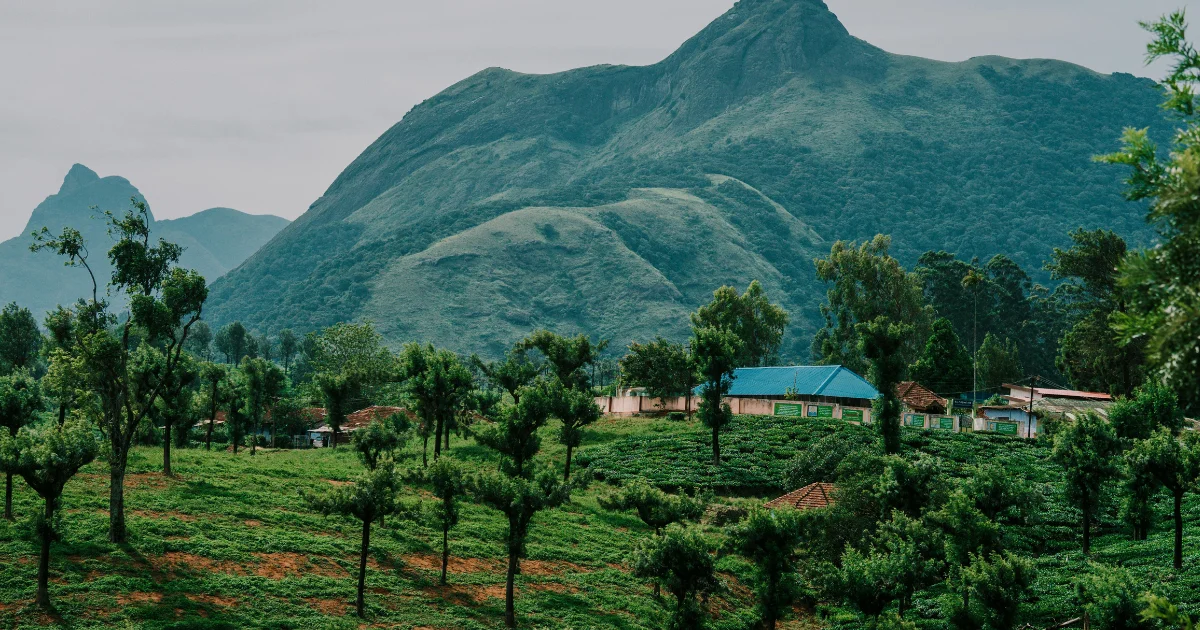How Planting Trees Can Naturally Cool the Planet
Introduction
Planting trees is one of the simplest and most effective ways to help combat climate change and cool the planet. Trees are not only beautiful additions to our landscapes, but they also serve as natural air conditioners, absorbing carbon dioxide (CO2), releasing oxygen, and creating cool, shaded areas. Through processes like evapotranspiration, carbon sequestration, and shading, trees help reduce temperatures and make the environment more livable. This article explores the many ways planting trees can naturally cool the planet and why this action is essential for our future.
Table of Contents
ToggleTrees Absorb Carbon Dioxide and Release Oxygen
One of the most important ways trees help cool the planet is by absorbing carbon dioxide, a greenhouse gas that traps heat in the Earth’s atmosphere. During photosynthesis, trees take in CO2 and release oxygen, cleaning the air and reducing the greenhouse effect.
Key Points:
A mature tree absorbs approximately 48 pounds of CO2 annually.
Forests act as “carbon sinks,” capturing and storing carbon, which reduces the amount in the atmosphere.
Trees can store large amounts of CO2 over their lifetimes, helping to slow global warming. Large-scale tree planting efforts, especially in areas that have been deforested, can have a significant impact on climate stabilization.
Evapotranspiration: Cooling the Air with Moisture Release
Trees release water vapor through a process called evapotranspiration, where water from the soil is absorbed by roots, travels through the tree, and evaporates from the leaves. This release of moisture cools the surrounding air, lowering temperatures much like an air conditioner.
Key Points:
Large trees can release up to 100 gallons of water into the air on hot days, cooling the surrounding area.
In forests and green areas, the cumulative cooling effect of evapotranspiration creates comfortable microclimates that help stabilize regional temperatures.
Evapotranspiration not only cools the air but also increases humidity, making trees essential for creating balanced and livable environments, especially in urban and arid areas.
Trees Provide Shade and Reduce Urban Heat Islands
Urban areas, filled with concrete, asphalt, and buildings, tend to absorb and retain heat, leading to a phenomenon known as the “urban heat island” effect. This results in higher temperatures in cities compared to rural areas. Trees provide shade, reducing the amount of heat absorbed by surfaces like roads and buildings.
Key Points:
Shaded areas under trees can be up to 10°F cooler than unshaded areas.
Strategic tree planting around buildings can reduce the need for air conditioning, lowering energy use and emissions.
By planting trees in cities and around buildings, we can decrease urban temperatures, reduce energy demand, and create cooler, more pleasant public spaces.
Forests Help Regulate Regional and Global Climate
Forests, with their dense tree cover and high rates of evapotranspiration, play a crucial role in regulating climate patterns. They help moderate temperature, humidity, and rainfall patterns across large regions. Forested areas create cooler environments that support biodiversity and maintain stable ecosystems, which is especially important as global temperatures rise.
Key Points:
Forests help prevent temperature extremes, creating a more balanced climate.
They release moisture that contributes to local rainfall, essential for water supplies and agriculture.
When we plant trees and protect forests, we support natural climate regulation processes that stabilize temperatures and promote healthier ecosystems.
Tree Roots Prevent Soil Erosion and Protect Water Sources
Trees stabilize the soil through their roots, preventing erosion and reducing the amount of sediment flowing into rivers and lakes. By holding soil in place, trees protect water quality and prevent flash floods and landslides, which are especially problematic in deforested or degraded lands.
Key Points:
Tree roots prevent soil from eroding and washing away during heavy rains.
Trees near rivers and lakes protect these water sources, maintaining cool water temperatures that benefit aquatic life.
Healthy forests and trees along waterways help maintain clear, cool water bodies, which are essential for biodiversity and local water supplies.
Planting Trees in Urban Areas Improves Air Quality
Trees absorb pollutants, such as nitrogen oxides, sulfur dioxide, and particulate matter, making them natural air purifiers. Urban areas with more trees tend to have better air quality, which contributes to lower rates of respiratory illnesses and improves public health. Cleaner air also leads to a more comfortable, breathable environment, especially during hot days when pollution can be more intense.
Key Points:
Trees filter out airborne pollutants, reducing the impact of urban smog and dust.
Improved air quality helps lower health risks related to pollution and heat.
Urban tree-planting projects not only provide cooling benefits but also create healthier, greener cities.
Promoting Biodiversity and Creating Resilient Ecosystems
Trees support a vast range of biodiversity, offering habitats, food, and shelter for countless species. Biodiversity strengthens ecosystems, making them more resilient to climate change and environmental stresses. Forests filled with diverse plant and animal life create balanced environments that naturally regulate climate and promote stability.
Key Points:
Forests are home to 80% of Earth’s terrestrial biodiversity, including plants, animals, and insects.
A diverse ecosystem with trees is better equipped to withstand and recover from changes in temperature, rainfall, and other climate factors.
Planting a variety of tree species helps create resilient ecosystems that support both cooling and long-term climate adaptation.
Trees Help Mitigate Climate Change by Slowing Global Warming
By absorbing CO2, creating cooler microclimates, stabilizing soil, and supporting biodiversity, trees offer a natural solution for slowing down climate change. Planting trees is a powerful way to offset human impact on the environment and restore damaged ecosystems. Reforestation and afforestation efforts around the world are essential in tackling climate change and creating a sustainable, livable planet.
Key Points:
Global tree-planting efforts can offset CO2 emissions, slow deforestation, and protect vulnerable ecosystems.
Responsible forestry and reforestation can significantly reduce the impacts of global warming.
Trees are an invaluable resource in our climate action toolkit, offering both immediate and long-term benefits.
Relevant post: In impressive trees influence the climate in 2024
Other Relevant: Trees and Climate Change: How Forests Benefit the Climate
Conclusion
Planting tree most effective ways to ensure a sustainable future. By working together to plant and preserve trees, we can help restore balance to our planet and provide a healthier, cooler world for generations to come.




